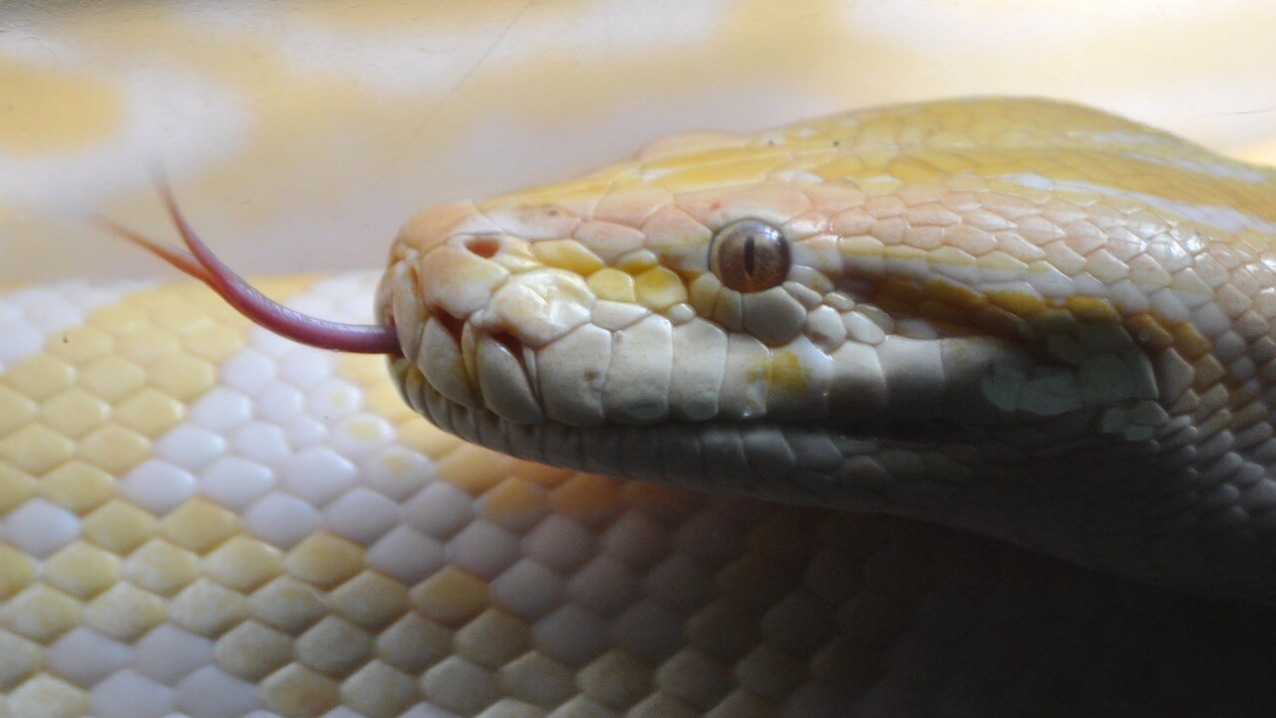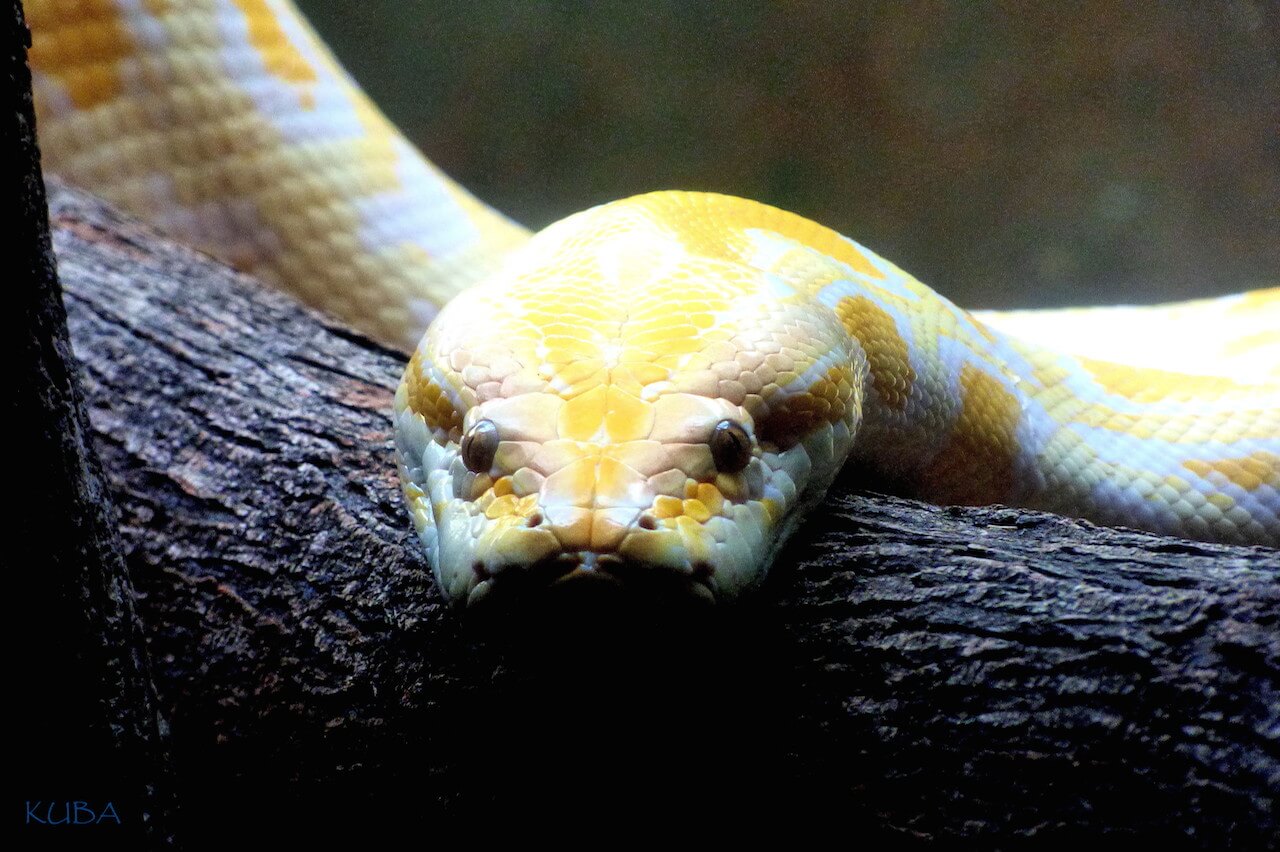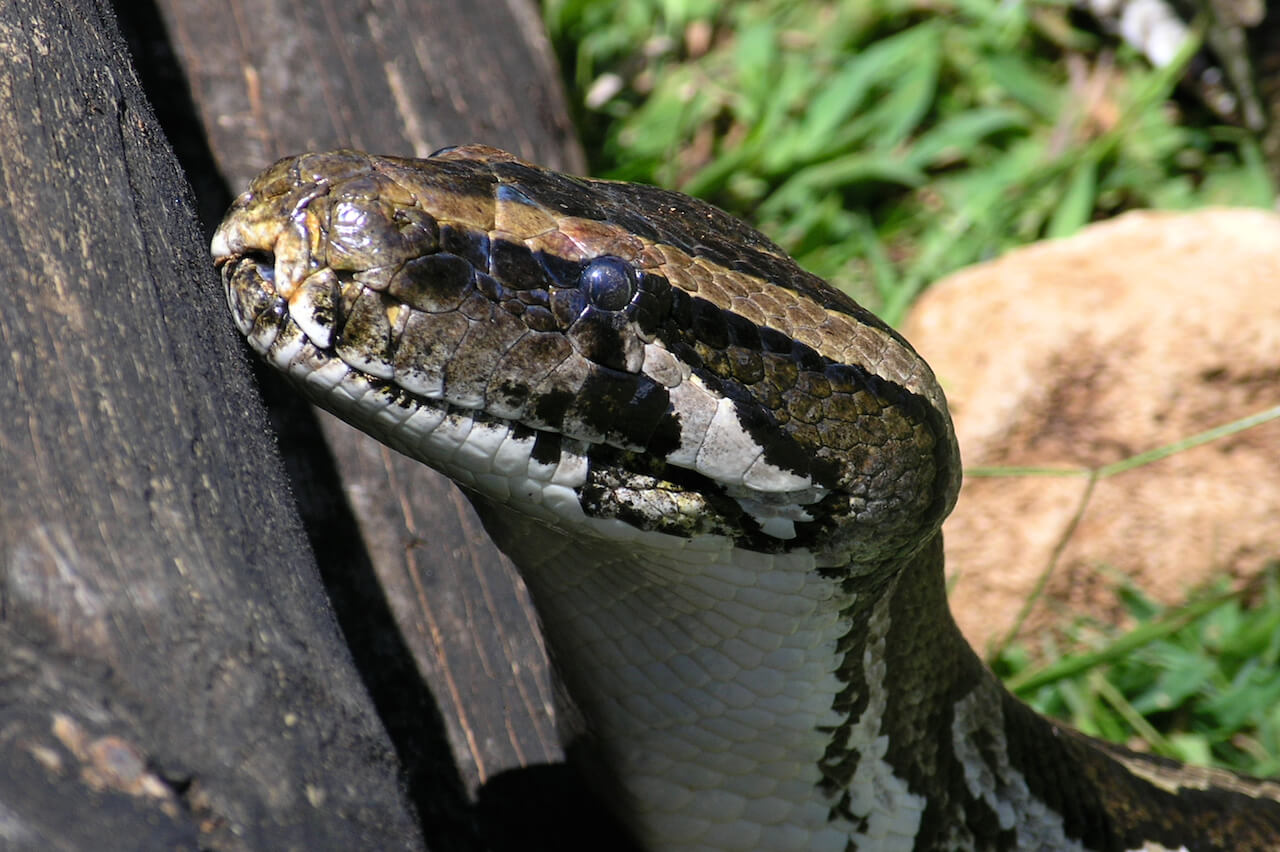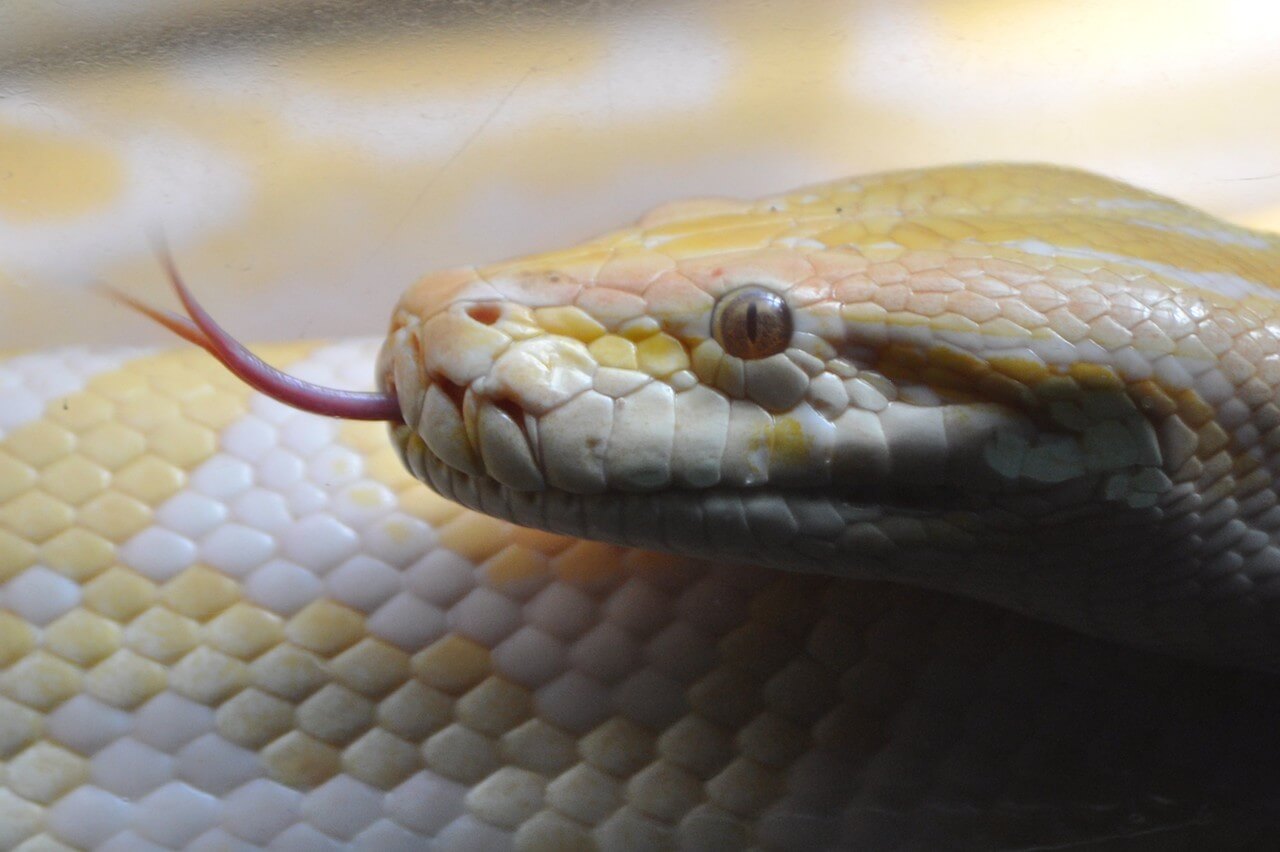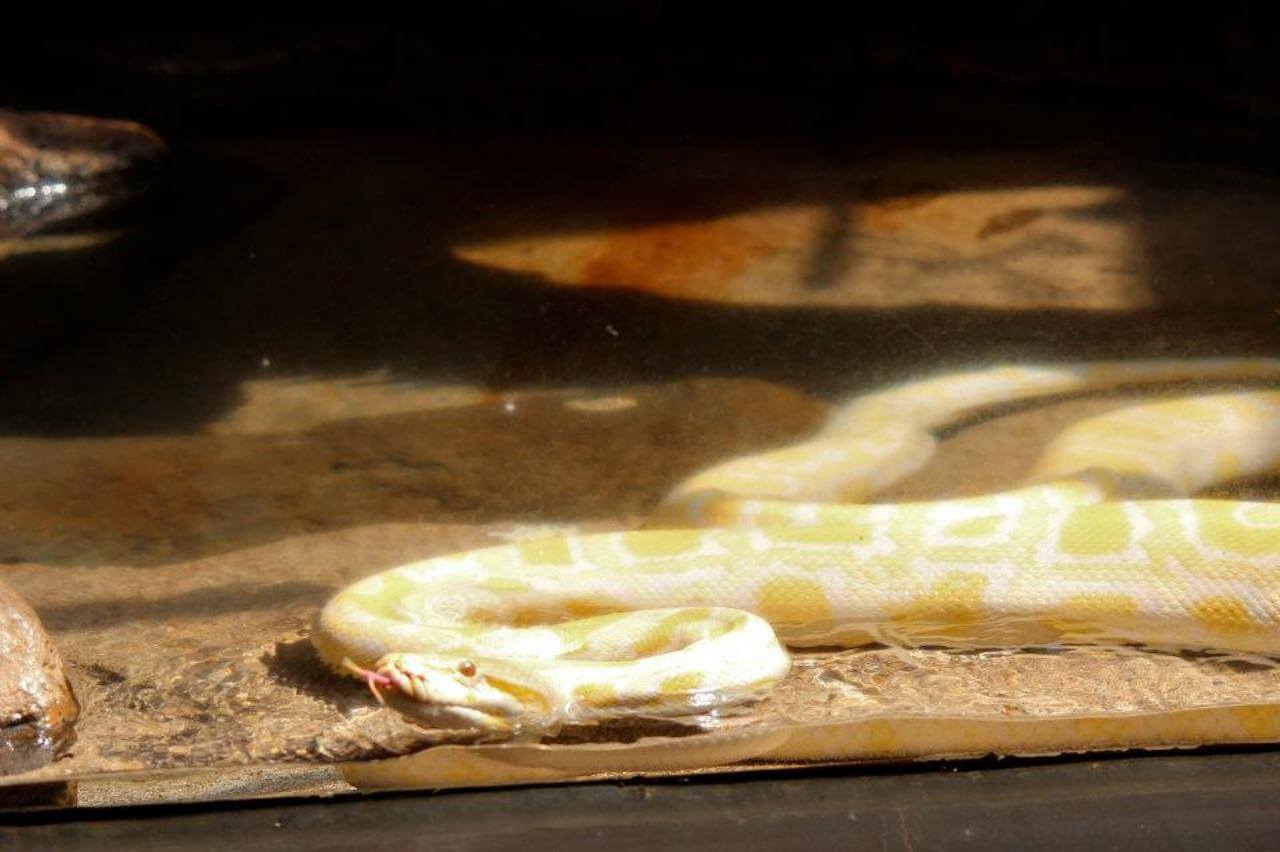python bivittatus
Burmese Python
About Me
Scientific Name: Python bivittatus
Description
The Burmese python, is light yellowish cream with a series of brown elongated rectangular blotches edged with black. There is a lance-shaped mark on the head and neck. There are a number of facial pits, which are sensitive to changes in temperature and allow the python to locate warm-blooded prey hiding in concealed areas.
Fun Facts
- They are excellent swimmers, being able to stay submerged for up to half an hour.
- A snake needs to eat the equivalent of its body weight in a year. After eating it may not feed for weeks and can even fast for several months.
- Kingdom: Animalia
- Phylum: Chordata
- Class: Reptilia
- Order: Squamata
The Burmese python, Python molurus bivittatus, is light yellowish cream with a series of brown elongated rectangular blotches edged with black. There is a lance-shaped mark on the head and neck. There are a number of facial pits, which are sensitive to changes in temperature and allow the python to locate warm-blooded prey hiding in concealed areas.
The Burmese python is one of the largest of all snakes, growing up to 25 feet, usually 20 and weighing up to 190 pounds. It continues to grow throughout life and the great length is due to the presence of a large number of vertebrae (up to 450). The female grows faster than the male and is ultimately larger. The outer layer of skin is shed depending on the rate of growth and may be several times a year.
The Burmese python is found in Burma, Malaysia and Thailand. It lives in jungles and scrubland and may live near human settlements.
The Burmese python climbs well and can suspend itself by its prehensile tail. It is also quite at home in the water, being a good swimmer, and is able to stay submerged for up to half an hour. In the northern parts of its range it may hibernate for some months during the cold season in a hollow tree, a hole in the riverbank or under rocks.
Pythons move by undulating the ribs backwards and forwards by muscular action. The ventral scales grip the substrate.
Like all snakes, pythons lack an outer and middle ear and are therefore deaf to airborne sounds of all but the lowest frequencies. Pythons are also mute or at best can utter a hissing sound by forcing air through the larynx. The sense of smell is the most acute sense. The tongue is flicked out and in carrying scent particles to the Jacobson’s organ in the roof of the mouth.
The Burmese python is carnivorous, feeding on mammals and birds. The snake uses its sharp backward pointing teeth to seize its prey. It then wraps its powerful body two or more times around the prey at the same time contracting its muscles, killing the prey by asphyxiation.
A snake needs to eat the equivalent of its body weight in a year. After eating it may not feed for weeks and can even fast for several months.
Sexual maturity is reached in 2-3 years. Pythons are oviparous, meaning it produces eggs, which develop and hatch outside the maternal body. Up to 107 eggs are laid, which the female coils around to incubate. The incubation period is two months or more. The rate of growth is influenced by the conditions under which the snake lives. Pythons have been known to live up to 25 years.
The Burmese python is listed as a Threatened species. With the spread of human settlements the scrubland habitat is the first habitat to disappear. Many have also been killed due to heavy demand for python skin by the leather industry. Some are also killed for food, particularly by the Chinese.
Other Reptiles
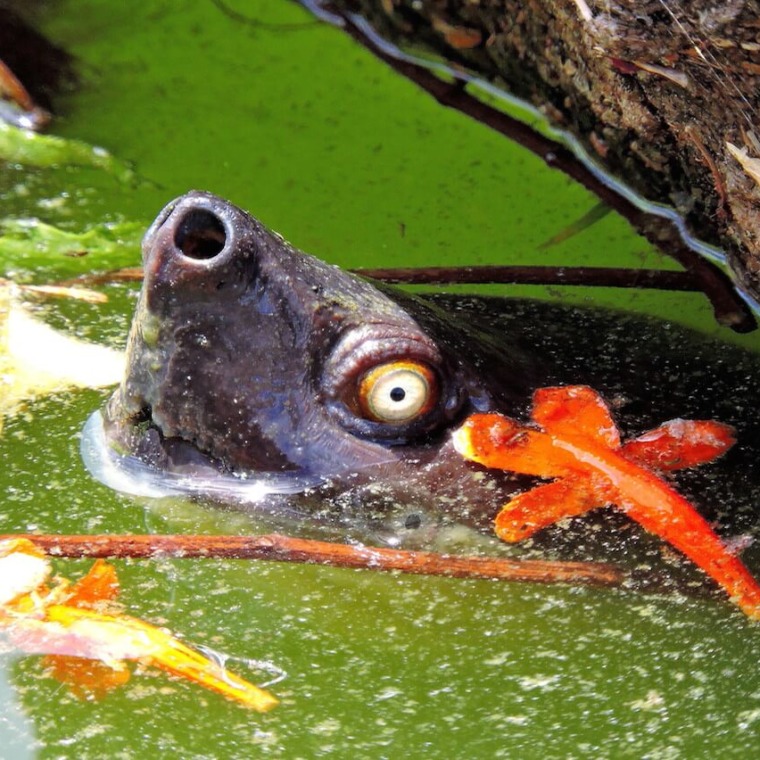
The last populations of Tutong are found in India, Indonesia, Bangaladesh, and Malaysia. It is extinct in its former range of Thailand, Myanmar, Vietnam, and Singapore.
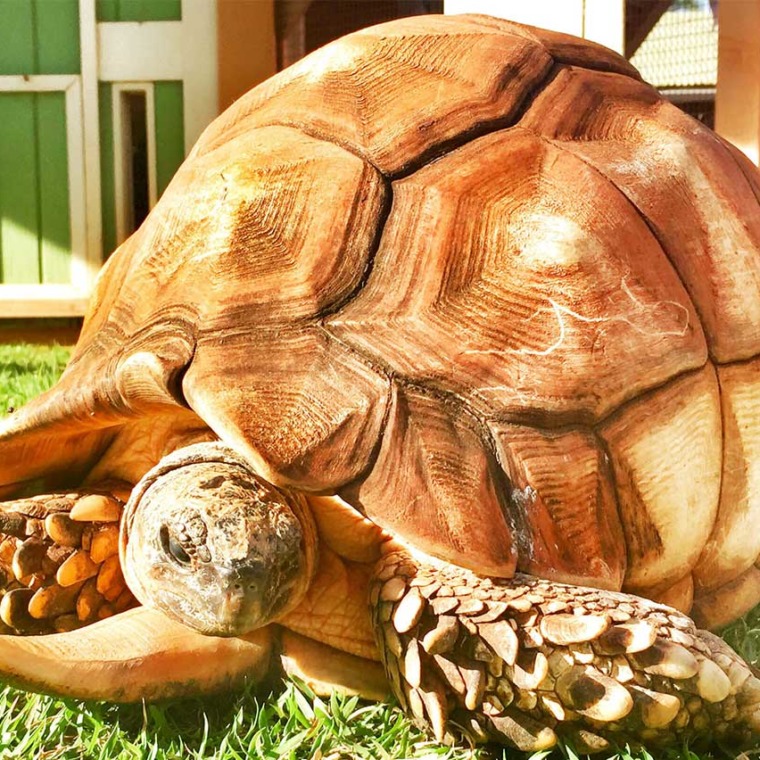
Inactive during cool, dry season (May to October). Does not dig burrows. Seeks protection in thickets and seeks shelter in surface litter. Forages during morning and late afternoon.

In the wild, this reptile is relegated to the extreme south and south-western portions of Madagascar. In recent times, they have also been introduced to the nearby island of Reunion.
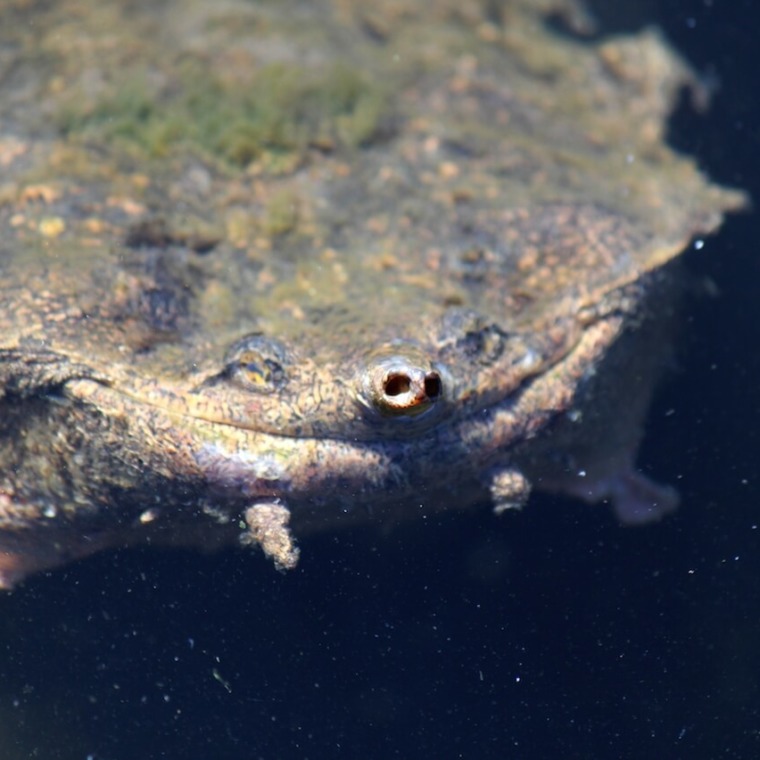
This species inhabits stagnant pools in Brazil and the Guianas and also in parts of the Amazon River and in Trinidad.
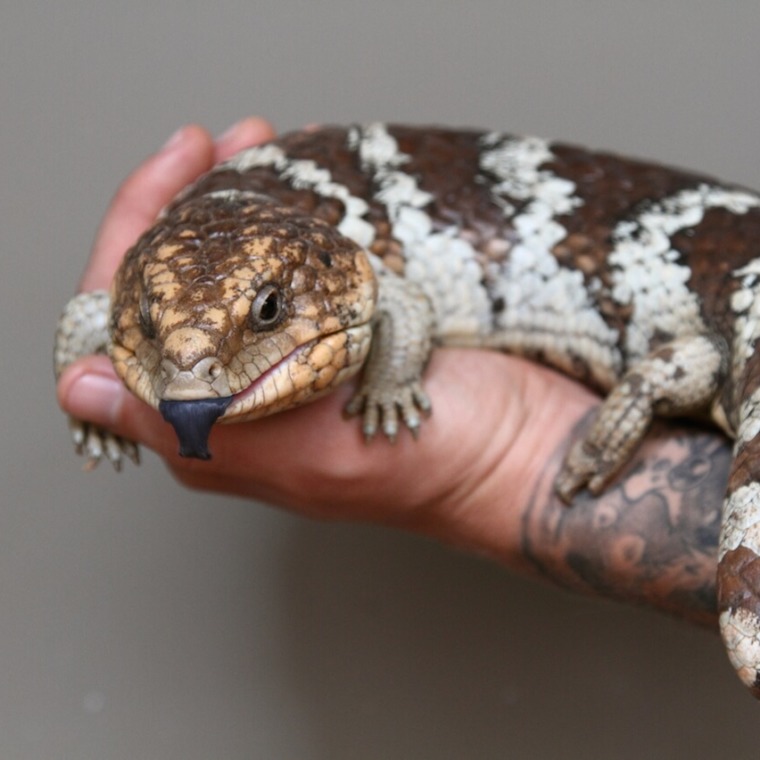
The Shingleback skink is found in southern and western Australia, in desert grassland areas or sandy dunes. Skinks are shy and secretive and seldom stray far from their shelter.


